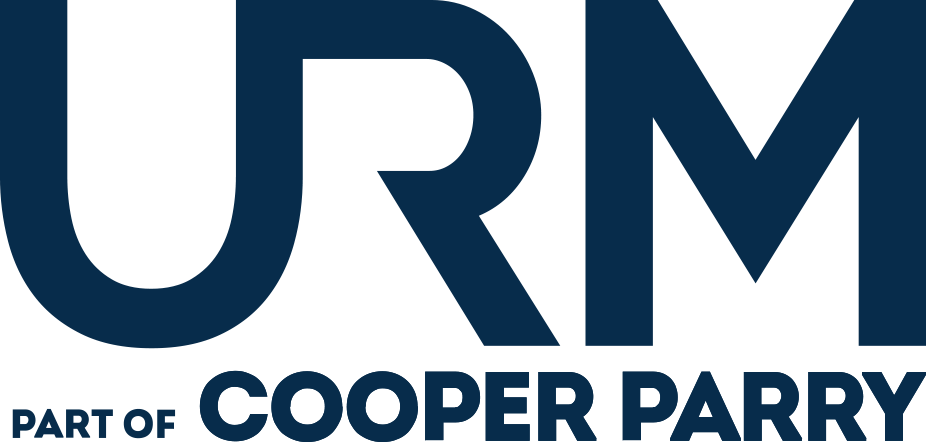ISO/IEC 27001:2022 offers a structured approach to managing the wide range of information security risks faced by organisations, with Annex A providing a catalogue of 93 controls grouped into four categories: organisational, people, physical, and technological. The technological controls, in particular, are critical in protecting an organisation’s information assets and ensuring the resilience of an organisation’s systems, particularly in the modern world where cyber security threats are so common.

To implement these controls effectively, your organisation must navigate a process that begins with understanding your unique context and ends with the integration of security measures into everyday operations. In this blog, we will explore how you can approach this task whilst balancing security, usability, and practicality.
Understanding the Need for Controls
Every organisation operates within a unique context, that is shaped by a multitude of factors including its industry, competitors, data sensitivity, and regulatory environment. A healthcare provider handling patient data, for example, faces different risks and compliance requirements compared to a financial institution or a software company. Before you can select and implement appropriate information security controls, you will need to gain a thorough understanding of this context. By doing so, your organisation ensures that any security measures implemented are effective and aligned with your goals and obligations.
It can be a challenging exercise to determine how to address the many risks your organisation faces, and there may be uncertainty around what those risks actually are. As such, you will need to conduct a formal ISO 27001 risk assessment to identify potential vulnerabilities, such as weak authentication practices, and the threats that could exploit them. A risk assessment will help to quantify the impact of these threats, whether it’s a financial loss, reputational damage, or legal repercussions, and this understanding will act as the foundation upon which all your subsequent security decisions will be built. (For further guidance on conducting ISO 27001 risk assessments, see our blog on Information Risk Assessment and Risk Treatment.)
Selecting the Appropriate Technological Controls
Once you have gained a clear picture of the risks you face, you must select the most appropriate controls to help mitigate them. The starting point for selecting controls in relation to ISO 27001 is Annex A of the Standard. The 2022 version of ISO 27001 lists a total of 93 controls to be considered, including 34 which come under the ‘technological’ category. Given that the controls were only updated in 2022, they reflect current, relevant security challenges, such as cloud computing, advanced malware, and hybrid work environments.

The selection of technological controls will be driven by your particular context. For example, if your organisation stores sensitive customer data in the cloud; the risks you face may include unauthorised access, data breaches, or compliance failures. To mitigate these risks, you might select controls related to encryption, secure access management, and monitoring systems. By mapping risks to specific controls, you will be able to ensure that your security investment addresses your most pressing vulnerabilities.
However, the selection process isn’t just about matching risks to controls; it’s also about considering feasibility and practicality. Some controls, such as data leakage prevention systems, might be beyond your budget. Others, like multi-factor authentication (MFA), might disrupt user workflows if not implemented with due consideration. As such, you will need to balance security needs with the practical constraints you face.
Adapting Controls to Meet Your Specific Needs
ISO 27001 is a highly flexible standard; you are not required to implement every control in Annex A to be considered conformant and/or to achieve ISO 27001 certification. Instead, you are encouraged to tailor your approach based on your organisation’s needs and circumstances. ISO 27002, the supporting standard for ISO 27001, is extremely useful in helping you achieve this tailored approach, providing practical advice on implementing the controls, including the use of attributes which enable you to select controls based on the objectives you are trying to achieve.
ISO 27002 provides valuable guidance on determining how controls need to be designed and implemented. For example, if you are implementing encryption, you might refer to ISO 27002 for guidance on choosing appropriate methods, managing cryptographic keys, and ensuring secure data storage. Similarly, if you are adopting monitoring controls you might use the guidance to design effective logging practices, select the right tools, and train staff to interpret alerts. (To learn more about ISO 27002, read our blog on ISO 27002, the Unsung Hero).
Adapting controls also means integrating them into your existing systems and processes. If your organisation already has robust physical security measures, you might combine these with technological controls to create a layered defence. For instance, data centre access might require visitors to present ID to a security guard (physical control) and use biometrics to open a locked door (technological control). This integration ensures that your controls work together, therefore closing gaps and reducing redundancies.
The Challenges of Implementation
The implementation of technological controls is not without challenges. Cost is often a significant barrier, particularly for small and medium-sized organisations. Advanced tools like security information and event management (SIEM) systems or intrusion detection systems can require substantial investments in technology and skilled personnel to manage and interpret the data they generate.
Complexity is another hurdle. Some controls, such as those involving cryptography, may require specialised knowledge to configure and maintain. Missteps, such as poor key management, can render even the most sophisticated encryption useless. Additionally, you will need to navigate the potential disruption controls can cause to everyday operations; for example, a poorly implemented access control system might frustrate employees and lead them to bypass security measures completely.
Careful planning and stakeholder involvement are key to overcoming these challenges. Engaging IT teams, management, and end users early in the process can help identify potential issues and ensure controls are effective and user friendly.
Balancing Security and Usability
Striking a balance between security and usability is an enduring difficulty for implementors of information security controls, with overly stringent controls hindering productivity, and lax measures potentially leaving your organisation vulnerable.
For instance, MFA is a highly effective control, but it can also be inconvenient for your users. As such, you might benefit from implementing MFA selectively to minimise disruption, requiring it only for high-risk systems or during remote access. Similarly, encryption can protect sensitive data, but if key management is too complex, it might lead to errors or non-conformance.
Regular monitoring and review are essential to maintaining this balance. You must revisit your technological controls as the threat landscape evolves to ensure they remain effective and relevant. For example, the rise of ransomware might prompt you to enhance your backup and recovery processes, whilst increasingly stringent privacy regulations might require stricter data protection measures.
The Benefits of Technological Controls
Technological controls help to defend your organisation against a wide range of threats, from malware and phishing to unauthorised access and data leaks, whilst automating many security processes can improve your efficiency and reduce the burden on your IT team. Technological controls can also help you comply with regulatory requirements, such as with the General Data Protection Regulation (GDPR), which requires organisations to implement ‘appropriate technical and organisational measures’ (TOMs) that ensure personal data is processed securely.
Perhaps most importantly, technological controls can enhance your organisation’s resilience. In the event of an incident, such as a cyber attack or personal data breach, controls like backups, monitoring systems, and incident response plans facilitate quick recovery, minimising any downtime and data loss.
Conclusion
By following a structured process— grounded in risk assessment, viability analysis, and practical adaptation— you will be able to implement controls that address your unique needs while also effectively managing the challenges of cost, complexity, and usability. Ultimately, the effectiveness of these controls depends not just on their technical sophistication but on how well you integrate them into the broader security framework. By striking the right balance between security and usability, you can protect your assets, comply with regulations, and build trust with your stakeholders.
How URM can Help?
Consultancy
With 2 decades of experience assisting organisations’ ISO 27001 implementation and over 400 successful certification projects behind us, URM is the ideal partner to support your organisation with any aspect of its conformance/certification to the Standard. Our large team of experienced consultants can offer your organisation a wide range of consultancy services to help you meet ISO 27001 requirements in full; for example, we can begin by conducting an ISO 27001 gap analysis, where we establish where you are already conformant, and those areas which may require further improvement. Using our proven risk assessment tool, Abriska 27001, we can also help you conduct your risk assessment, and, following this, work with you to develop policies, processes and information security management system (ISMS) infrastructure which both meet the requirements of the Standard in full, but are also appropriate for your organisation’s unique culture and needs. Following implementation of the ISMS, URM can also provide you with a range of internal audit services, including conducting an internal audit ahead of your certification assessment to ensure it is functioning as intended, planning and implementing a full 3-year ISO 27001 audit programme, or auditing more specific aspects of the ISMS or particular controls.
Training
In addition to our consultancy services, URM also regularly delivers a range of ISO 27001-related training courses, providing you with the skills and expertise necessary to effectively manage information security and conformance to the Standard in your workplace. Our Introduction to ISO 27001 Course explores all aspects of information security and the importance of ISO 27001 in protecting information, whilst our 2-day ISO/IEC 27001:2022 Transition Course covers both the changes seen in the latest version of the Standard and how to implement them. Or, if you would like to gain an industry-recognised information security qualification, URM regularly delivers the Certificate in Information Security Management Principles (CISMP) Training Course, which will fully prepare you to sit and pass the BCS invigilated examination.
URM can help you achieve ISO 27001 certification
Unsure whether your ICT risk framework meets DORA standards? Our experts will carry out a detailed gap analysis and provide clear, prioritised steps to help you achieve full compliance.
Our consultants will evaluate your organisation against DORA’s core requirements. Gain practical insights to strengthen your digital resilience and meet regulatory expectations.

URM explains the 8 information security management controls included within the ‘Organisational controls’ theme and how to prepare for an audit of each control

Many organisations have had to adapt very quickly to the rapidly changing restrictions brought in across the globe to help combat the spread of COVID-19.

In this blog, we are going to look at governance. We are regularly asked, ‘is information governance the same as IT governance?’



